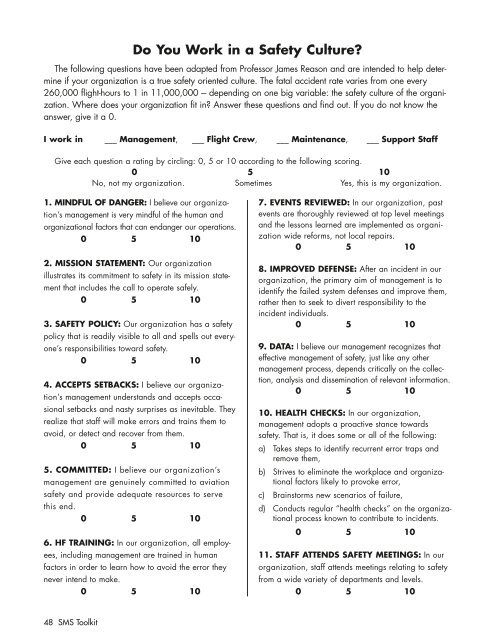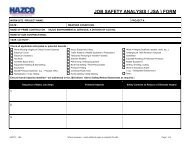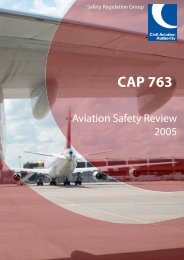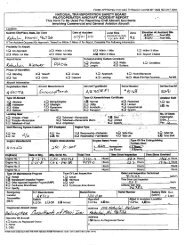International Helicopter Safety Team Safety Management System Toolkit
IHST - Safety Management Toolkit - Skybrary
IHST - Safety Management Toolkit - Skybrary
- No tags were found...
You also want an ePaper? Increase the reach of your titles
YUMPU automatically turns print PDFs into web optimized ePapers that Google loves.
Do You Work in a <strong>Safety</strong> Culture?<br />
The following questions have been adapted from Professor James Reason and are intended to help determine<br />
if your organization is a true safety oriented culture. The fatal accident rate varies from one every<br />
260,000 flight-hours to 1 in 11,000,000 --- depending on one big variable: the safety culture of the organization.<br />
Where does your organization fit in? Answer these questions and find out. If you do not know the<br />
answer, give it a 0.<br />
I work in ___ <strong>Management</strong>, ___ Flight Crew, ___ Maintenance, ___ Support Staff<br />
Give each question a rating by circling: 0, 5 or 10 according to the following scoring.<br />
0 5 10<br />
No, not my organization. Sometimes Yes, this is my organization.<br />
1. MINDFUL OF DANGER: I believe our organization’s<br />
management is very mindful of the human and<br />
organizational factors that can endanger our operations.<br />
0 5 10<br />
2. MISSION STATEMENT: Our organization<br />
illustrates its commitment to safety in its mission statement<br />
that includes the call to operate safely.<br />
0 5 10<br />
3. SAFETY POLICY: Our organization has a safety<br />
policy that is readily visible to all and spells out everyone’s<br />
responsibilities toward safety.<br />
0 5 10<br />
4. ACCEPTS SETBACKS: I believe our organization’s<br />
management understands and accepts occasional<br />
setbacks and nasty surprises as inevitable. They<br />
realize that staff will make errors and trains them to<br />
avoid, or detect and recover from them.<br />
0 5 10<br />
5. COMMITTED: I believe our organization’s<br />
management are genuinely committed to aviation<br />
safety and provide adequate resources to serve<br />
this end.<br />
0 5 10<br />
6. HF TRAINING: In our organization, all employees,<br />
including management are trained in human<br />
factors in order to learn how to avoid the error they<br />
never intend to make.<br />
0 5 10<br />
7. EVENTS REVIEWED: In our organization, past<br />
events are thoroughly reviewed at top level meetings<br />
and the lessons learned are implemented as organization<br />
wide reforms, not local repairs.<br />
0 5 10<br />
8. IMPROVED DEFENSE: After an incident in our<br />
organization, the primary aim of management is to<br />
identify the failed system defenses and improve them,<br />
rather then to seek to divert responsibility to the<br />
incident individuals.<br />
0 5 10<br />
9. DATA: I believe our management recognizes that<br />
effective management of safety, just like any other<br />
management process, depends critically on the collection,<br />
analysis and dissemination of relevant information.<br />
0 5 10<br />
10. HEALTH CHECKS: In our organization,<br />
management adopts a proactive stance towards<br />
safety. That is, it does some or all of the following:<br />
a) Takes steps to identify recurrent error traps and<br />
remove them,<br />
b) Strives to eliminate the workplace and organizational<br />
factors likely to provoke error,<br />
c) Brainstorms new scenarios of failure,<br />
d) Conducts regular “health checks” on the organizational<br />
process known to contribute to incidents.<br />
0 5 10<br />
11. STAFF ATTENDS SAFETY MEETINGS: In our<br />
organization, staff attends meetings relating to safety<br />
from a wide variety of departments and levels.<br />
0 5 10<br />
48 SMS <strong>Toolkit</strong>







